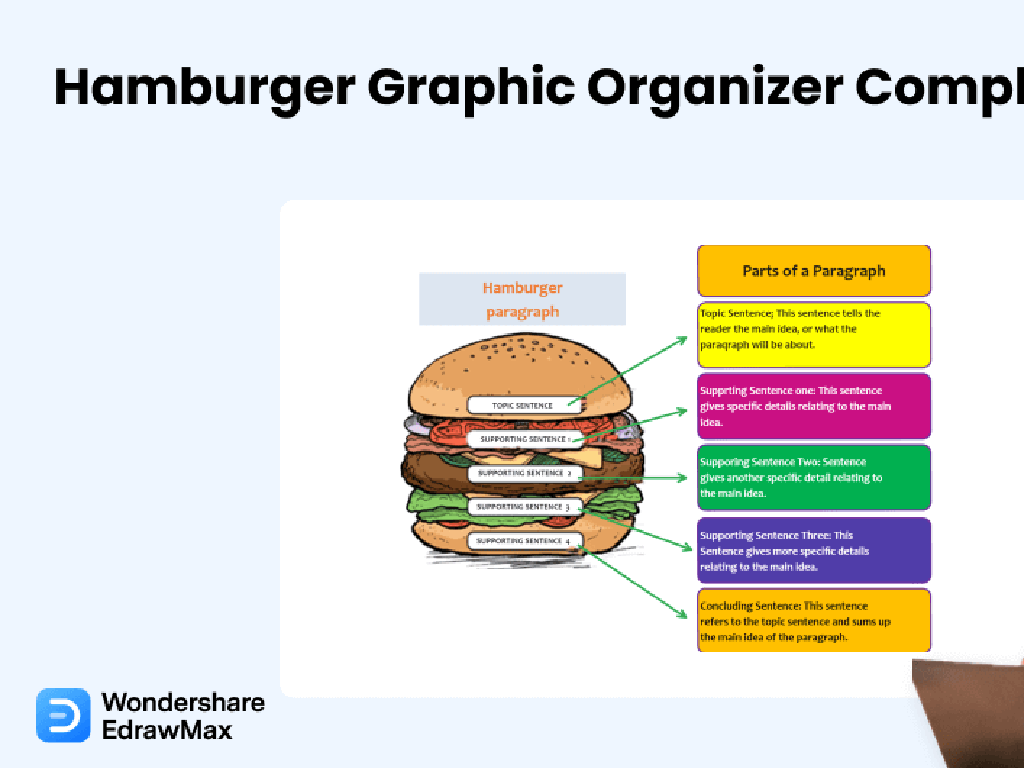Stereochemistry
Subject: Science
Grade: High school
Topic: Organic Chemistry
Please LOG IN to download the presentation. Access is available to registered users only.
View More Content
Introduction to Stereochemistry
– 3D arrangement in molecules
– Atoms in space, not just 2D; like hands, molecules can be non-superimposable mirror images.
– Stereochemistry in organics
– Determines molecules’ physical & chemical properties; crucial for drug design.
– Real-world Stereochemistry
– Drug effectiveness, taste of food, and scent of perfumes are influenced by molecular arrangement.
|
This slide introduces the concept of Stereochemistry, which is the study of the three-dimensional arrangement of atoms within molecules. Emphasize that unlike the flat structures often drawn in textbooks, molecules exist in a spatial environment where the arrangement of atoms can significantly affect the properties and functions of the molecule. This is particularly important in organic compounds, where slight differences in spatial arrangement can lead to different biological activities. Real-world applications include the development of pharmaceuticals, where the correct 3D arrangement is crucial for the drug’s effectiveness, as well as in the food industry and perfumery, where Stereochemistry affects flavors and scents. Encourage students to think about how the ‘handedness’ of molecules can be similar to their own hands related but not identical, and not superimposable.
Isomers: Structural vs. Stereoisomers
– Define isomers in chemistry
– Isomers have same molecular formula but different structures
– Structural vs. Stereoisomers
– Structural isomers differ in connectivity; stereoisomers differ in spatial arrangement
– Chirality in molecules
– Chirality refers to molecules that are mirror images but not superimposable
– Examples of each isomer type
– Structural: butane vs. isobutane; Stereo: L- vs. D-glucose
|
This slide introduces the concept of isomers in organic chemistry, focusing on the distinction between structural and stereoisomers. Isomers are compounds with the same molecular formula but different arrangements of atoms. Structural isomers have different connectivity of atoms, while stereoisomers have the same connectivity but differ in the orientation of their atoms in space. Chirality is a key concept in stereoisomerism, where certain molecules exist as two enantiomers that are non-superimposable mirror images of each other, much like left and right hands. Provide examples such as butane and isobutane for structural isomers, and L-glucose and D-glucose for stereoisomers to illustrate the concepts. Encourage students to visualize molecules in three dimensions to understand stereoisomerism better.
Chirality and Enantiomers in Stereochemistry
– Defining molecular chirality
– A molecule is chiral if it’s not superimposable on its mirror image, like left and right hands.
– Introduction to enantiomers
– Enantiomers are mirror-image molecules that cannot be superimposed.
– Enantiomers in pharmaceuticals
– Some drugs have different effects depending on the enantiomer used.
– Impact on drug efficacy
– Enantiomers can differ in how well they bind to biological targets, affecting drug action.
|
This slide introduces the concept of chirality and its importance in stereochemistry, particularly in the field of pharmaceuticals. Chirality is a property of a molecule that makes it non-superimposable on its mirror image, much like how left and right hands are mirror images but not identical. Enantiomers are types of stereoisomers that are mirror images of each other and cannot be superimposed. In pharmaceuticals, enantiomers can have significantly different effects on the body; one may be therapeutic while the other is less effective or even harmful. Understanding the role of enantiomers is crucial for drug design and development. Discuss the thalidomide tragedy as a historical example of enantiomer effects. Encourage students to think about how slight molecular differences can have large biological implications.
Cahn-Ingold-Prelog Priority Rules
– Assign priorities to substituents
– Higher atomic number gets higher priority
– Determine R/S configuration
– R is clockwise, S is counterclockwise
– Practice chiral center configurations
– Use examples to assign R or S to chiral centers
– Understanding chirality in molecules
|
This slide introduces the Cahn-Ingold-Prelog priority rules, which are essential for understanding stereochemistry in organic molecules. Start by explaining how to assign priorities to substituents based on atomic number, with isotopes being considered when atomic numbers are equal. Then, move on to determining the R (rectus) or S (sinister) configuration by arranging substituents in order of priority and using the right-hand rule for R and the left-hand rule for S. Provide practice examples for students to apply these rules to chiral centers, reinforcing the concept through hands-on learning. Emphasize the importance of these rules in understanding the 3D spatial orientation of molecules, which is crucial for predicting reactions and biological activity.
Diastereomers and Meso Compounds
– Diastereomers vs. Enantiomers
– Diastereomers have different physical properties and are not mirror images, unlike enantiomers.
– What are Meso Compounds?
– Meso compounds have multiple chiral centers but are superimposable on their mirror image due to an internal plane of symmetry.
– Exploring Optical Activity
– Optical activity refers to the rotation of plane-polarized light by a chiral molecule.
– Significance in Stereochemistry
|
This slide introduces students to the complex topic of Stereochemistry, focusing on Diastereomers and Meso Compounds. Begin by explaining the difference between Diastereomers and Enantiomers, emphasizing that Diastereomers are stereoisomers that are not mirror images and have different physical properties. Introduce Meso Compounds as a unique type of stereoisomer that, despite having chiral centers, is achiral due to an internal plane of symmetry. Discuss optical activity as a fundamental property of chiral molecules and how it’s measured. The significance of these concepts in Stereochemistry lies in their application to the understanding of molecular interactions and reactions in organic chemistry. Encourage students to consider how these differences might affect the behavior of molecules in biological systems.
Cis-Trans Isomerism in Stereochemistry
– Define Cis-Trans Isomerism
– Isomers with same formula but different arrangement of atoms in space, e.g., cis-but-2-ene and trans-but-2-ene
– Impact on physical properties
– Isomers have different boiling points, solubility, and densities
– Natural and synthetic examples
– Cis-retinal in vision, trans-fats in food industry
– Explore isomer applications
|
Cis-Trans Isomerism, a type of geometric isomerism, is crucial in understanding how the arrangement of atoms in space can affect a molecule’s physical properties and functions. This slide will explain the concept with examples like cis-but-2-ene and trans-but-2-ene, highlighting how such isomers can have different boiling points, solubility, and densities due to the different spatial arrangements of their atoms. Students will learn about the occurrence of these isomers in nature, such as cis-retinal in the human eye, and their synthesis in the lab, like the production of trans-fats used in the food industry. The slide will also touch upon the significance of these isomers in pharmaceuticals and materials science.
Conformational Isomers in Stereochemistry
– Staggered vs. Eclipsed conformations
– Staggered: atoms are spread out, Eclipsed: atoms are aligned
– Conformational stability and energy
– Lower energy states are more stable; energy diagrams show this
– Interpreting Newman projections
– Newman projections provide a visual representation of conformations
– Significance of conformational isomers
|
This slide introduces students to conformational isomers, focusing on the spatial arrangement of atoms in molecules and how this affects their stability. Staggered conformations are when atoms are spread out to minimize repulsion, while eclipsed conformations have atoms aligned, leading to higher energy and less stability. Energy diagrams help visualize the potential energy of different conformations, emphasizing that molecules naturally prefer the lowest energy state. Newman projections are a tool for chemists to represent and analyze the three-dimensional arrangement of atoms. Understanding these concepts is crucial for students as they explain how molecules behave and react in different environments. Encourage students to practice drawing Newman projections and interpreting energy diagrams to solidify their understanding.
Stereocenters and Stereogenicity
– Identifying Stereocenters
– A Stereocenter is an atom with spatially different substituents.
– Understanding Stereogenicity
– Stereogenicity refers to the ability of a molecule to form stereoisomers.
– Examples in complex molecules
– Consider the Stereocenters in glucose or ibuprofen.
– Significance of Stereocenters
– Stereocenters influence physical and biological properties.
|
This slide introduces the concept of Stereocenters and Stereogenicity in organic molecules. Students should learn how to identify Stereocenters by looking for atoms, typically carbon, with four different substituents leading to non-superimposable mirror images. Stereogenicity is the property that allows a molecule to have different spatial arrangements, leading to stereoisomers. Use examples like glucose, which has multiple Stereocenters, or ibuprofen, which has a single Stereocenter, to illustrate the complexity and variety in organic molecules. Highlight the importance of Stereocenters in determining the physical and biological properties of molecules, such as drug effectiveness. Encourage students to explore molecules and identify Stereocenters as part of their learning process.
Resolution of Enantiomers in Stereochemistry
– Methods to separate enantiomers
– Techniques include crystallization, chromatography, and use of chiral agents.
– Enantiomeric purity in drugs
– Pure enantiomers can have different therapeutic effects and fewer side effects.
– Techniques for chiral resolution
– Methods like chiral HPLC, SMB, and crystallization are used to resolve enantiomers.
|
This slide introduces the concept of enantiomer resolution, which is crucial in the production of pharmaceuticals. Students should understand that enantiomers are mirror images of the same compound that cannot be superimposed. The separation methods are diverse and can include physical properties or involve chiral agents that differentiate between enantiomers. Emphasize the importance of enantiomeric purity in pharmaceuticals, as different enantiomers can have vastly different effects in the body. Discuss various chiral resolution techniques, such as High-Performance Liquid Chromatography (HPLC), Simulated Moving Bed (SMB) chromatography, and crystallization, which are used in industrial settings to achieve the desired purity.
Class Activity: Exploring Chirality with Models
– Build chiral molecules using a model kit
– Assign R/S configurations to chiral centers
– R/S nomenclature determines the 3D arrangement of atoms around a chiral center
– Create diastereomers with the kit
– Discuss diastereomer relationships
– Diastereomers are stereoisomers with two or more chiral centers and are not mirror images
|
This hands-on activity is designed to help students understand the three-dimensional nature of chiral molecules in stereochemistry. Provide each student or group with a molecular model kit. Guide them to build their own chiral molecules and identify the chirality. Teach them how to assign R (rectus) or S (sinister) configurations based on the arrangement of substituents around the chiral center. Next, have them create diastereomers, which are non-mirror image stereoisomers, and discuss how their physical properties might differ despite having similar molecular formulas. This activity will solidify their understanding of stereochemical concepts and the importance of molecular orientation in organic chemistry.





